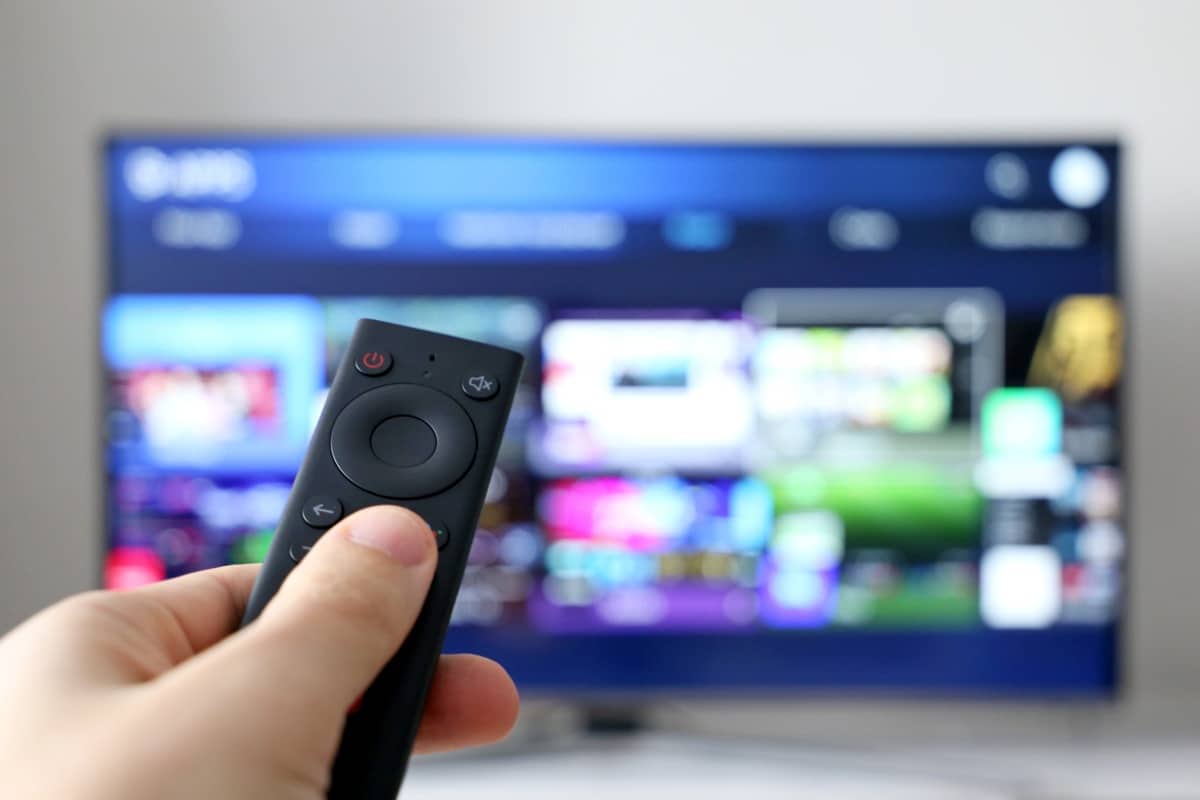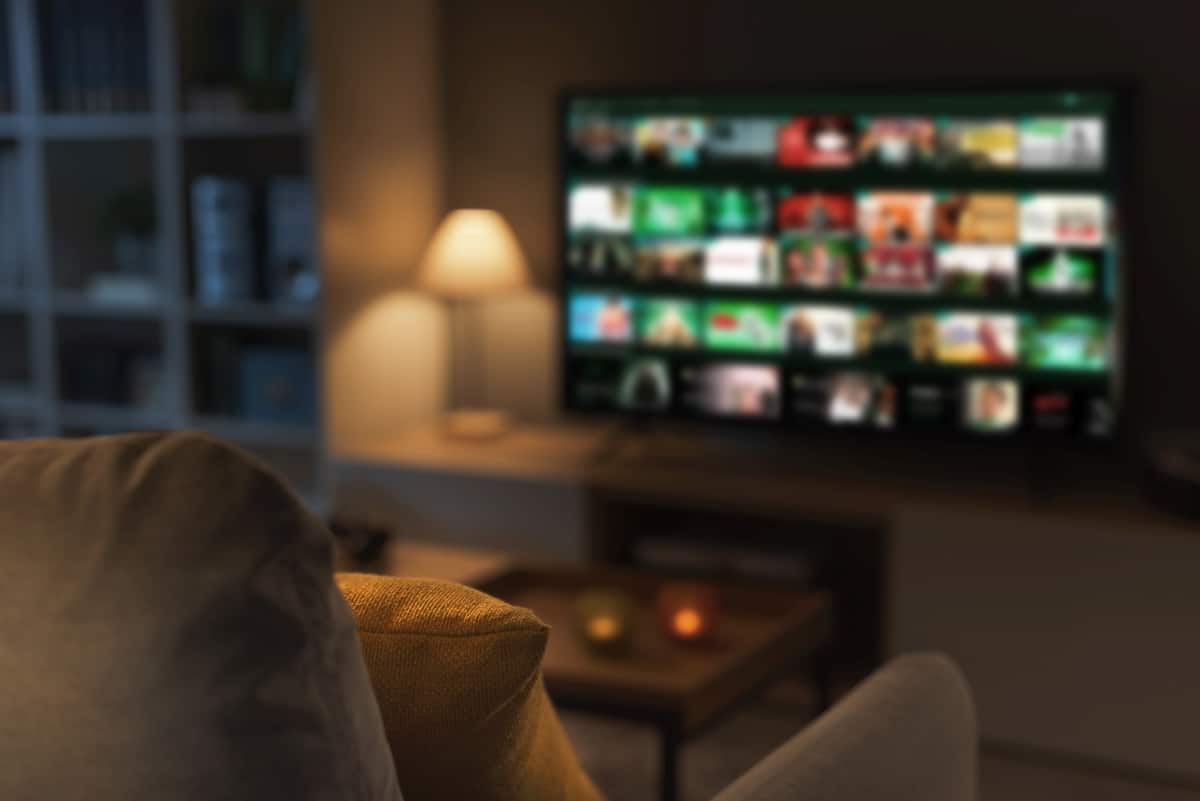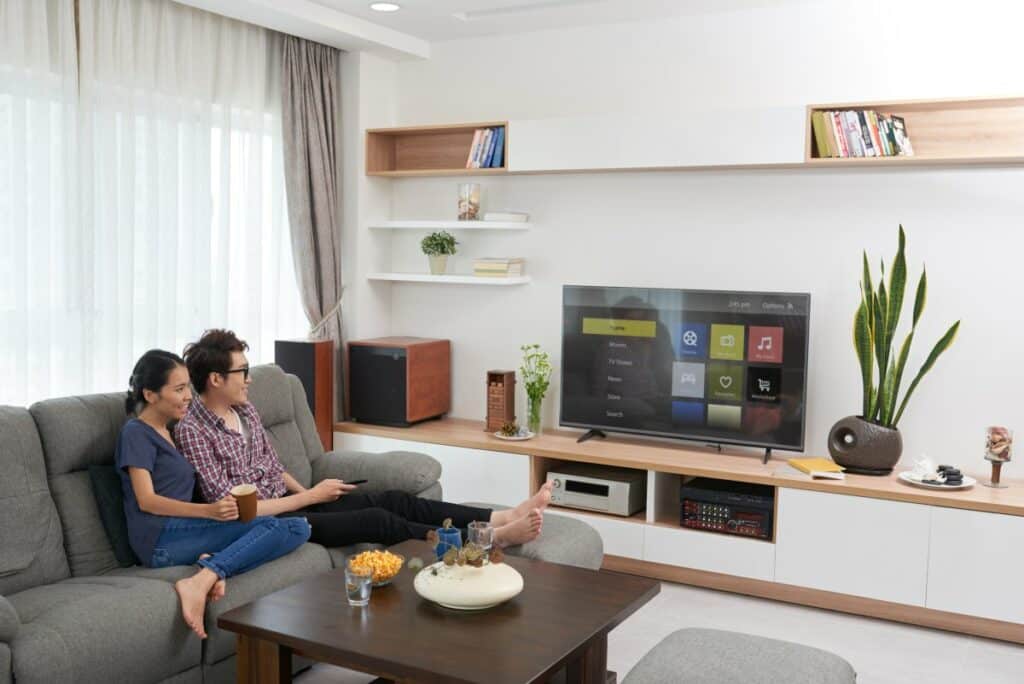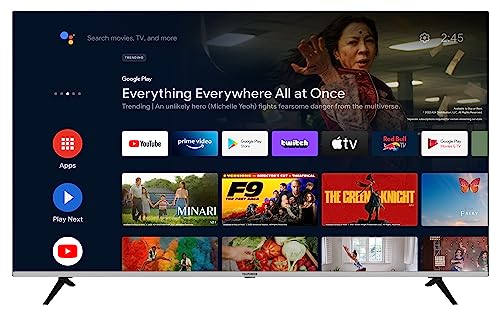the essentials in brief
There are Smart TVs in different inch sizes, from 24 to over 100 inches. One inch is equal to 2,54 cm….
A 37-inch television has a screen diagonal of around 94 cm and a width of around 83 cm. How big a Smart TV should be...
A television with a screen diagonal of 44 inches has a width of around 98 cm and a height of around 55 cm.
Smart TV sizes are diverse - because the size is a decisive factor for the television experience. The larger the screen, the more details you can see and the more you can immerse yourself in the world of your favorite series or films.
But it's not just the size that counts, but also the distance between you and the television Resolution of the image and the lighting of the room. In this blog article we will explain to you how to find the perfect size for your Smart TV and what you should pay attention to.
Contents
How do you measure the size of a Smart TV?

The size of a Smart TV is usually given in inches. This is a measure of the length of the screen diagonal, i.e. the slanting line from one corner of the screen to the opposite corner. A Inch corresponds to 2,54 cm.
So to calculate the size of a Smart TV in cm, you have to Multiply the inch number by 2,54. For example, a 55-inch Smart TV has a screen size of around 140 cm. To calculate the width and height of a Smart TV, you can use the following formulas:
- Width = diagonal x cos(α), where α is the angle between the diagonal and the width
- Height = diagonal x sin(α), where α is the angle between the diagonal and the height
The angle α depends on the aspect ratio of the screen, i.e. the ratio between width and height. The Most Smart TVs have an aspect ratio of 16:9, which means that the width is 16 parts and the height is 9 parts of a whole. In this case the angle α is approximately 30 degrees.
How big should a Smart TV be?
The optimal size of a Smart TV depends on various factors, such as: B. the distance between you and the television, the image resolution, that Viewing angle and your personal preferences. However, there are some general guidelines that can help you make the right choice.
The distance between you and the television should be be approximately two and a half to three times the screen diagonal. This means, for example, that with a 55-inch television you should maintain a distance of around 3,5 to 4 meters.
Note: If you sit closer, you may be single pixel or that your eyes tire quickly. If you sit further away, you may miss details or the image may appear too small.
The resolution of the image should be as high as possible to obtain a clear and sharp image. The resolution indicates how many image points (pixels) the screen has. The more pixels, the more detail the screen can display.
The most common resolutions for Smart TVs are HD (1280 x 720 pixels), Full HD (1920 x 1080 pixels) and 4K or Ultra HD (3840 x 2160 pixels). For Smart TVs larger than 55 inches, we recommend a resolution of at least Full HD, or even better 4K.
The viewing angle should be as large as possible so that you can also see a good picture from the side. The viewing angle indicates how far you can move sideways away from the television, without the image losing quality. The larger the viewing angle, the better.
The viewing angle depends on the type of screen. There are two main types: LCD and OLED. LCD screens generally have a smaller viewing angle than OLED screens, but are also cheaper. OLED screens have a wider viewing angle and also offer higher contrast and better color reproduction, but are also more expensive.
Tip: Of course, your personal preferences also play a role in choosing the size of your Smart TV. Some people like a big screen to feel like they are in the cinema. Others prefer a smaller screen to avoid overwhelming themselves or to save space. Ultimately, you have to decide for yourself which size suits you and your room best.
List of all Smart TV sizes
Here is a list of Smart TV sizes and their dimensions in cm:
- 24 inches: 53 x 30 cm
- 32 inches: 71 x 40 cm
- 40 inches: 89 x 50 cm
- 42 inches: 93 x 52 cm
- 43 inches: 95 x 54 cm
- 48 inches: 106 x 60 cm
- 49 inches: 109 x 61 cm
- 50 inches: 111 x 62 cm
- 55 inches: 122 x 69 cm
- 58 inches: 128 x 72 cm
- 65 inches: 144 x 81 cm
- 70 inches: 155 x 87 cm
- 75 inches: 166 x 93 cm
- 77 inches: 171 x 96 cm
- 83 inches: 184 x 103 cm
- 85 inches: 188 x 106 cm
- 86 inches: 190 x 107 cm
- 88 inches: 195 x 110 cm
How do you set up your Smart TV correctly?

For an optimal television experience, it's not just the size of your Smart TV that is important. The positioning and setting of your Smart TV are also important. Here are some tips on how to properly place your Smart TV:
- The Smart TV should Stand in the middle of the room if possible or hang it so you can see it clearly from wherever you sit. It should also be at eye level or tilted slightly downward so that you don't have to raise or lower your head.
- The smart TV should not directly in front of a window or other light source as this may cause reflections or glare. It shouldn't be too dark either, as this can strain the eyes. It is better to ensure uniform and indirect lighting in the room.
- The Smart TV can with one HDMI-Cable to your other devices like Receiver, Blu-ray-Player or game console can be connected to ensure high image quality. It should also be connected to the internet to use smart features such as streaming services or apps.
Note: To get the best picture and the best Ton To receive it, the Smart TV should be set up according to your wishes. These include, for example, brightness, contrast, color, sharpness and tone. Most Smart TVs have preset modes for different situations such as movies, sports or games. You can also make individual settings or ask an expert for help.
What are the advantages of a Smart TV?
A smart TV is more than just a television. It is a versatile device with many advantages. Here are some of them:
- With a Smart TV you can access one Variety of online content such as films, series, music, games or news. You can choose between different streaming services such as Netflix, Amazon Prime Video or Disney+ or watch content from the internet browser. You will also find apps to install or you can connect your smartphone to the Smart TV to show photos or videos.
- A Smart TV is very user friendly and comfortable. You can operate it with a remote control, voice control or gesture control. Or you can connect it to other smart devices like speakers, cameras or thermostats.
- A smart TV offers you one high image quality and an immersive experience. You can choose from different image formats such as HD, Full HD or 4K to see the finest details and most vibrant colors. In addition, you can choose from different picture modes such as HDR, Dolby Vision or HLG to optimize contrast and brightness. You can also connect a surround sound system or soundbar to enhance the sound.
- A Smart TV offers you a high level of security and data protection. You can do yours personal data and settings with a password or a PIN protect. Access rights can also be set for various apps or content. And you can read and accept the data protection regulations and terms of use of the various providers.
How do you find the perfect Smart TV for you?
To find the perfect Smart TV for you, you should ask yourself the following questions: How big is your room and how far away do you sit from the TV? Which resolution and which one image format do you wish? Which online content and apps do you want to use? How would you like to operate and set up your Smart TV? How much money do you want to spend?
Once you have answered these questions, you can start looking for the right model. You can be inspired by various tests, evaluations or recommendations.


![DYON Movie Smart 32 VX 80 cm (32 inch) TV (HD Smart TV, HD Triple Tuner (DVB-C/-S2/-T2), App Store, Prime Video, Netflix, YouTube, DAZN, Disney+) [Mod. 2023]](https://m.media-amazon.com/images/I/41CCvJ5NEpL.jpg)
